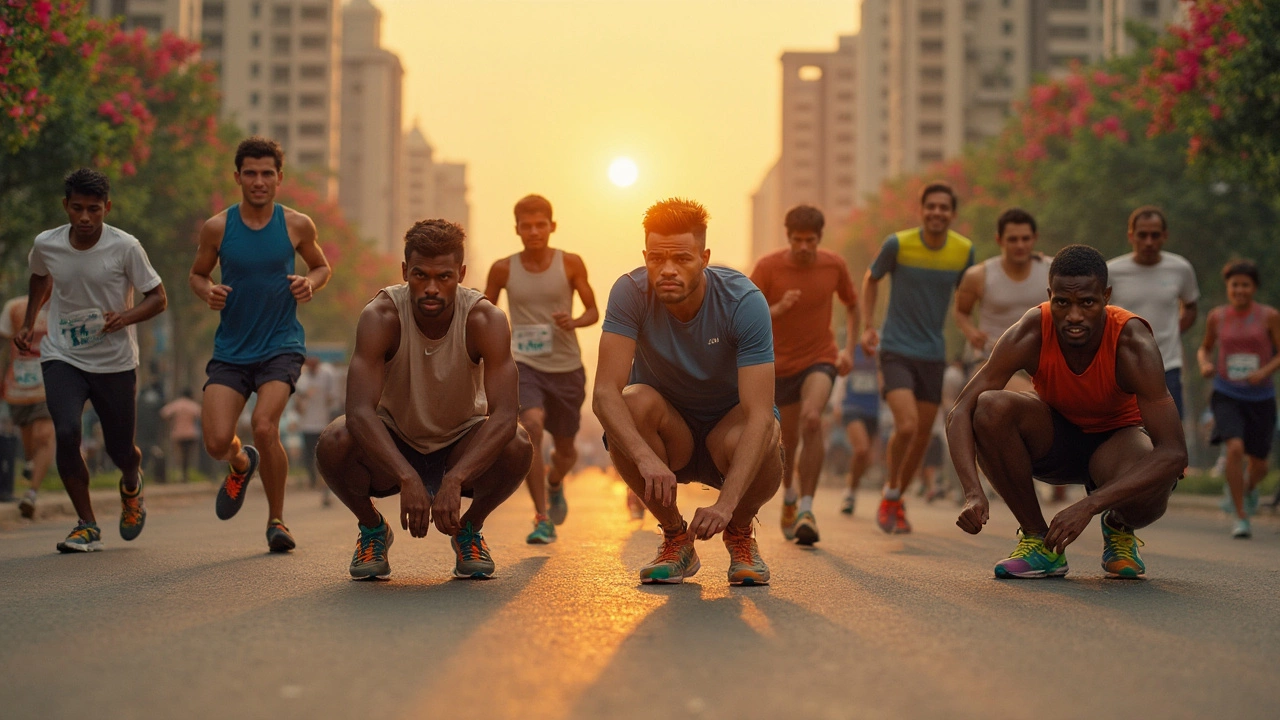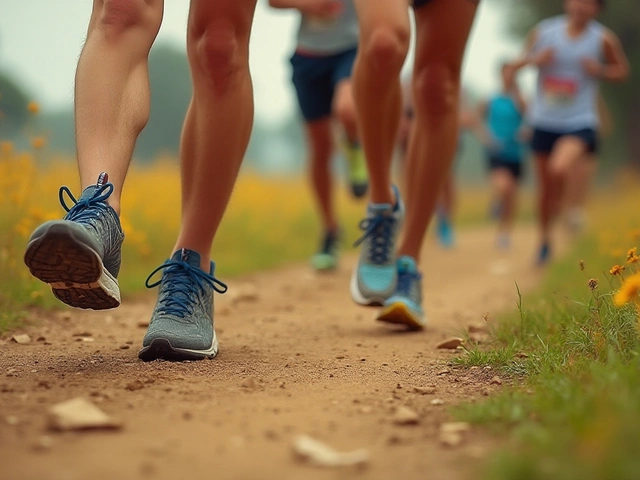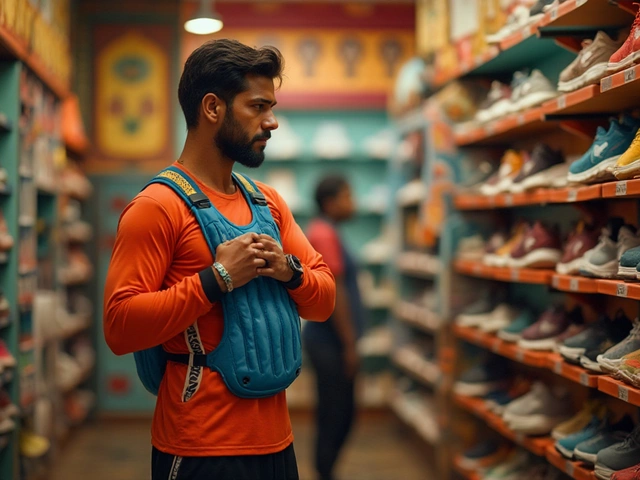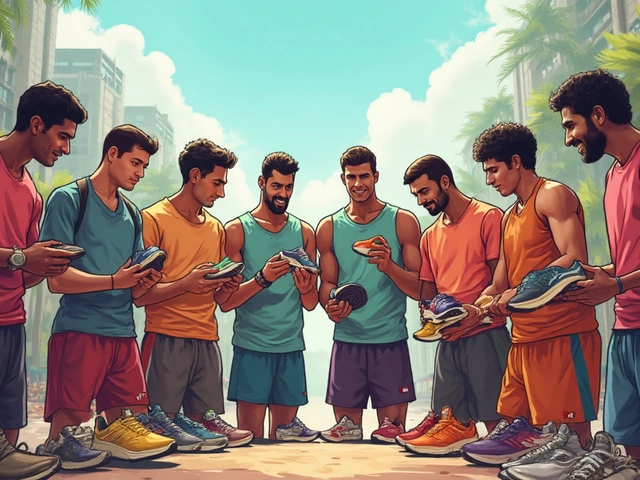You’ve probably heard someone rave about how Hokas feel “like walking on marshmallows.” These shoes have taken over both the roads and the trails, and it’s not just a fad. The first time you pick up a pair, you’ll notice the crazy thick soles—they look chunky, sure, but slip them on and suddenly every crack in the pavement disappears under your feet.
So what’s the big deal? It’s all about that extra cushioning. Hoka didn’t just add a little foam—they basically reimagined how soft a running shoe can feel without making it wobbly. That means less pounding on your joints, especially over long distances. Lots of marathoners and recovery runners swear by them, and even people who struggle with plantar fasciitis say they finally got some relief.
But there’s more going on than just comfort. Hokas somehow manage to balance all that plushness with surprising lightness, so your legs don’t get tired from lifting bricks. Their special rocker design helps you roll smoothly through each stride—try it, and you’ll notice your feet just want to keep moving forward.
If you’re hunting for a shoe that takes the sting out of high mileage, deals with hard surfaces, or just gives your feet a break, Hokas are tough to beat. Still, they’re not magic for everyone. Before you grab a pair, it’s smart to know what you’re getting into, and how to pick the right one for your running style or foot shape.
- What Makes a Hoka a Hoka
- How Hokas Change Your Run
- Who Should Try Hokas
- Tips for Getting the Most Out of Your Hokas
What Makes a Hoka a Hoka
When people talk about Hoka, they’re usually pointing right at the oversized foam soles—the heart of what makes these shoes stand out in a crowd. Instead of the thin midsoles you’ll see in old-school running shoes, Hokas slap on a ton of lightweight EVA or Profly foam, making them look about twice as thick as most other brands. Runners say it’s the closest thing to running on a cloud without leaving the ground.
But Hoka isn’t just throwing extra cushioning at your feet for fun. The brand uses a few key design elements that all work together for comfort and performance:
- Cushioning: That famous chunky midsole offers serious shock absorption. Even on concrete, it cuts down on the pounding your legs take.
- Meta-Rocker Geometry: Think of it like a rocking chair for your foot. This design helps guide your stride forward, so you waste less energy and keep a smooth roll with every step.
- Lightweight Materials: Hokas look heavy, but the materials are super light. Some popular models weigh in at under 9 ounces, which is nuts for this much padding.
- Wide, Stable Base: The bottom of a Hoka is broad, so even with the height, your foot stays steady instead of wobbling with each landing.
- Active Foot Frame: It’s like your foot sits ‘in’ the shoe instead of just ‘on’ it. This helps with support and control, especially on uneven ground.
Since dropping their first model in 2009, Hoka has stuck with these basics but tweaked the details. Now, you’ll see shoes for everything from trails to track, but they all keep those thick soles that make Hokas instantly recognizable.
Check out this quick side-by-side of how Hokas stack up against the typical running shoe:
| Feature | Hoka | Traditional Running Shoe |
|---|---|---|
| Midsole Height | 28-37mm | 18-25mm |
| Average Weight (Men's size 9) | 8.5 oz | 9.5-11 oz |
| Drop (heel to toe) | 4-6mm | 8-12mm |
| Meta-Rocker Shape | Yes | No |
If you’re choosing a Hoka, you’re betting on comfort above all. That’s what brings folks back—especially anyone logging big miles or coming back from injury. It’s not hype; their features are designed for real benefits you can actually feel.
How Hokas Change Your Run
Most runners notice a real difference in how they feel just a few miles into their first run with Hokas. It often comes down to their trademark thick midsole, which is made of special EVA foam that absorbs much more shock compared to standard running shoes. When you land, that foam cushions your joints and takes the sting out of pounding on asphalt or concrete.
But it’s not just about softness. The shape of Hokas—the so-called "Meta-Rocker"—acts a bit like a rocking chair for your foot. As you roll forward, this shape helps guide you into your next step. For distance runners, that “rolling” motion can really make a difference, helping stave off fatigue over the long haul and even shaving seconds off miles by smoothing out your stride.
Here’s something interesting: a 2022 study published in the Journal of Sports Science & Medicine found that runners wearing Hokas experienced about 10% less muscle soreness in their calves and knees after a long run, compared to those in traditional running shoes.
"The unique cushioning in Hoka shoes protects runners from repetitive impact, reducing the risk of stress-related injuries," says Dr. Michael McGregor, sports podiatrist at Stanford.
If you pay attention during group runs, you’ll see Hokas on all sorts of runners—marathoners, beginners, even people just walking dogs. They become popular because they tackle some real problems:
- Less impact on knees, ankles, and hips.
- Helps with recovery runs by making every step feel softer.
- The wide sole increases stability, especially on uneven terrain.
- The lightweight foam keeps heavy shoes from slowing you down.
Check out this bit of data from Hoka’s customer survey (2024):
| Benefit | Percent of Runners Who Noticed |
|---|---|
| Reduced Joint Pain | 83% |
| Smoother Transitions | 76% |
| Increased Recovery Speed | 62% |
The Hoka difference isn’t just in how they feel; it’s in what they help you avoid—like overuse injuries that can stop you from running altogether. It could take a run or two to get used to the extra cushion if you’ve never tried them before, but once you do, the change is hard to ignore.
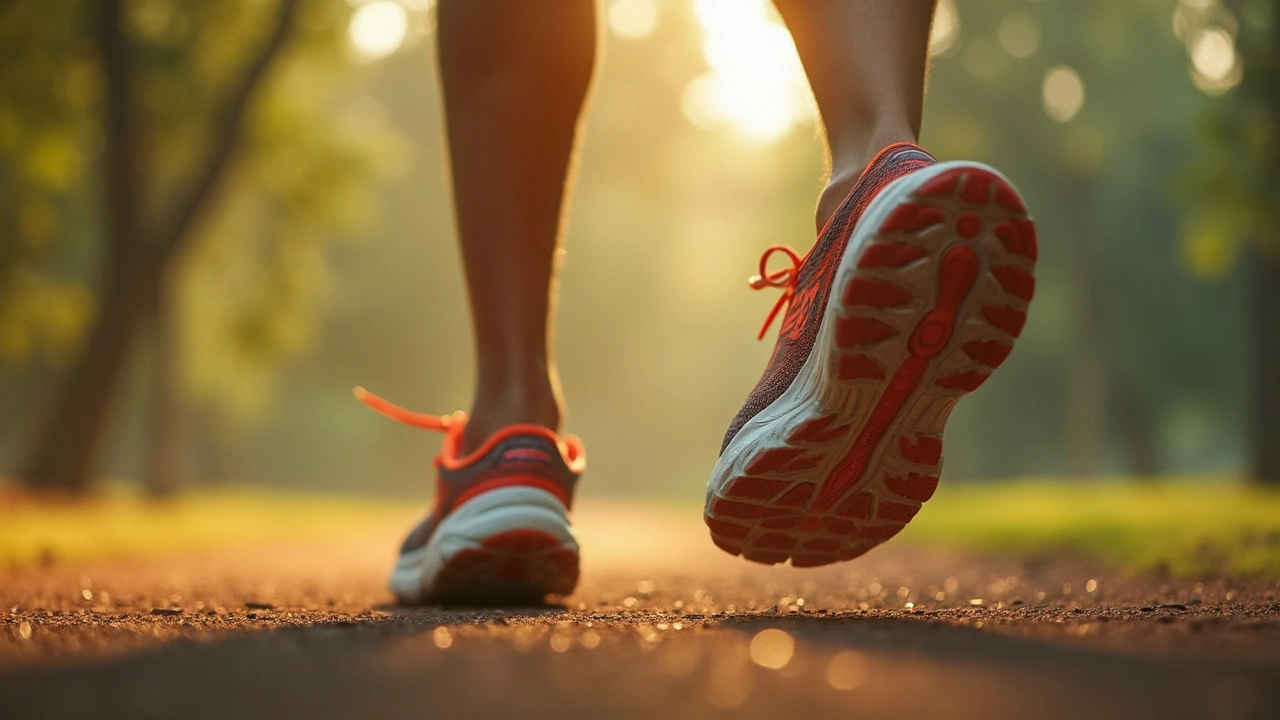
Who Should Try Hokas
If you’ve noticed how many runners at local races lace up in Hokas, you might think they’re just for hardcore marathoners. But honestly, these shoes fit way more people than you’d expect. Anyone dealing with sore knees, heel pain, or just plain tired feet can benefit—whether you’re walking your dog or training for a big race.
Let’s get specific. Hokas are especially popular with folks who:
- Run a lot of miles each week—marathoners, ultrarunners, or daily joggers looking to spare their joints on pavement.
- Need extra shock absorption because of joint pain or injury recovery. Doctors and physical therapists sometimes recommend Hokas to people with plantar fasciitis or arthritis.
- Stand or walk on hard surfaces for hours, like nurses or retail workers, who need shoes that stay comfy even after a long shift.
- Are coming back from an injury and need a shoe that makes every step a bit gentler.
Different models work for different feet, but most Hokas have roomy toe boxes and solid arch support, so folks with wide feet or high arches are usually happy, too. If you like a stable ride but want an easy “roll” forward with every stride, you might love their signature rocker shape.
Here’s a quick look at who’s buying and loving Hokas, based on a survey by Running USA in 2024:
| Type of Runner/Walker | Percent Using Hokas |
|---|---|
| Marathoners (40+ mi/week) | 58% |
| Everyday Runners (15-30 mi/week) | 40% |
| Injury Recovery/Medical Use | 27% |
| Hospital/Service Workers | 21% |
A quick tip: If you mainly run short distances or do lots of track intervals, you might find Hokas feel bulky. Some prefer a lower stack height or a lighter trainer for faster paces. But if comfort is high on your wish list, or you’re pounding out the miles, you owe it to yourself to try a Hoka at least once.
Tips for Getting the Most Out of Your Hokas
Getting the best out of Hoka running shoes isn’t just about lacing them up and going for a run. There are easy ways to make sure they last longer, feel better, and actually help you run the way you want. Here’s what you should keep in mind:
- Pick the Right Model: Not all Hokas are built the same. Some, like the Bondi and Clifton, are extra cushioned for road running and daily miles, while the Speedgoat is designed for trails. If you’re not sure, try them on in a store or check Hoka’s website fit guides. A bad match will spoil the experience.
- Get Your Fit Checked: Hokas run a bit different from other brands—sometimes a half-size up is more comfortable, especially if you have wide feet. Don’t assume your normal running shoe size will do the trick.
- Let Them Breathe: After each run, take out the insoles and let the shoes air out. This helps prevent odors and keeps the foam springy for longer. Stuffing them in a gym bag right after a sweaty run is a recipe for stink and faster wear.
- Watch Your Mileage: Even the best foam can only take so much pounding. Most Hokas last around 400 to 500 miles before they start to lose their bounce. Track your miles—your phone or smartwatch can help—or jot runs down so you know it’s time for a change.
- Rotate Your Pairs: If you run often, having two pairs and swapping them out between runs extends shoe life and gives the midsole more time to recover.
- Easy on the Wash: Don’t toss your Hokas in the washing machine. Wipe the uppers with a wet cloth and let mud dry before brushing it off. Machine washing breaks down the glue and foam way faster.
- Break Them In Slowly: Don’t take your brand-new Hoka shoes on a marathon right out of the box. Wear them for a few short runs first to let your feet and muscles adjust to the unique cushioning and rocker.
To show just how long Hokas generally last based on actual use, check out this simple table from users surveyed by the shoe review site RunRepeat in 2024:
| Hoka Model | Average Lifespan (Miles) | Main Use |
|---|---|---|
| Bondi | 470 | Road, daily running |
| Clifton | 420 | Road, training |
| Speedgoat | 410 | Trail running |
| Challenger | 430 | Road/trail hybrid |
These numbers are averages, so your shoes might last a little longer or shorter depending on how and where you run. If the cushion starts to feel flat, or you notice new aches, it’s a sign your Hokas need replacing.
